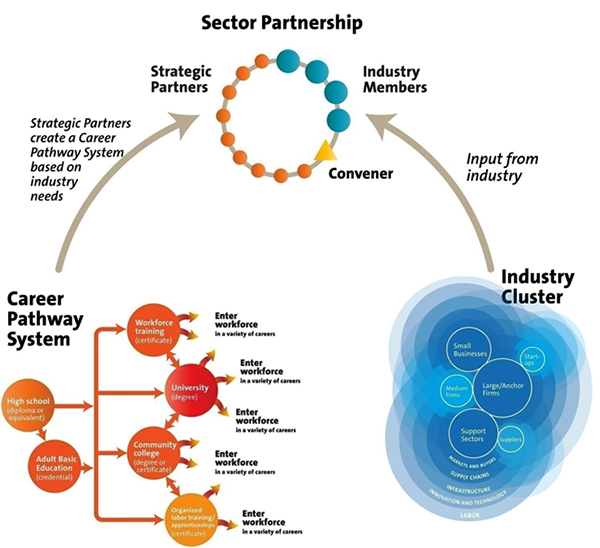Industry Partnerships
Amid the challenges of the slowly recovering national economy, sector strategies can do the following:
Address current and emerging skill gaps.
Sector strategies offer a mechanism to focus scarce resources on industries that are major job providers in an area, as well as to focus comprehensively on the workforce skills, from entry level to advanced, required in a regional economy.
Provide a means to engage directly with industry across traditional boundaries.
Businesses operate in economic regions that may cross city, county, and state lines and education and economic development areas. Sector strategies work across the boundaries to identify and address specific workforce needs in almost every industry.
Better align state programs and resources serving employers and workers.
Sector strategies help to reduce inefficiencies and streamline state efforts by coordinating various programs and braiding disparate funding streams intended for the same purpose.
Today more than half the nation’s states are exploring or implementing sector strategies, making the model the most consistently adopted approach to meeting businesses’ need for skilled workers and workers’ need for good jobs. Sector strategies are among the few workforce interventions that statistical evidence shows to improve employment opportunities for workers and to increase their wages once on the job.
Employers report increases in productivity, reductions in customer complaints, and declines in staff turnover, all of which reduce costs and improve the competitiveness of their companies.
This is likely why an estimated 1,000 sector partnerships are operating across the country.
Next: Career Pathways
